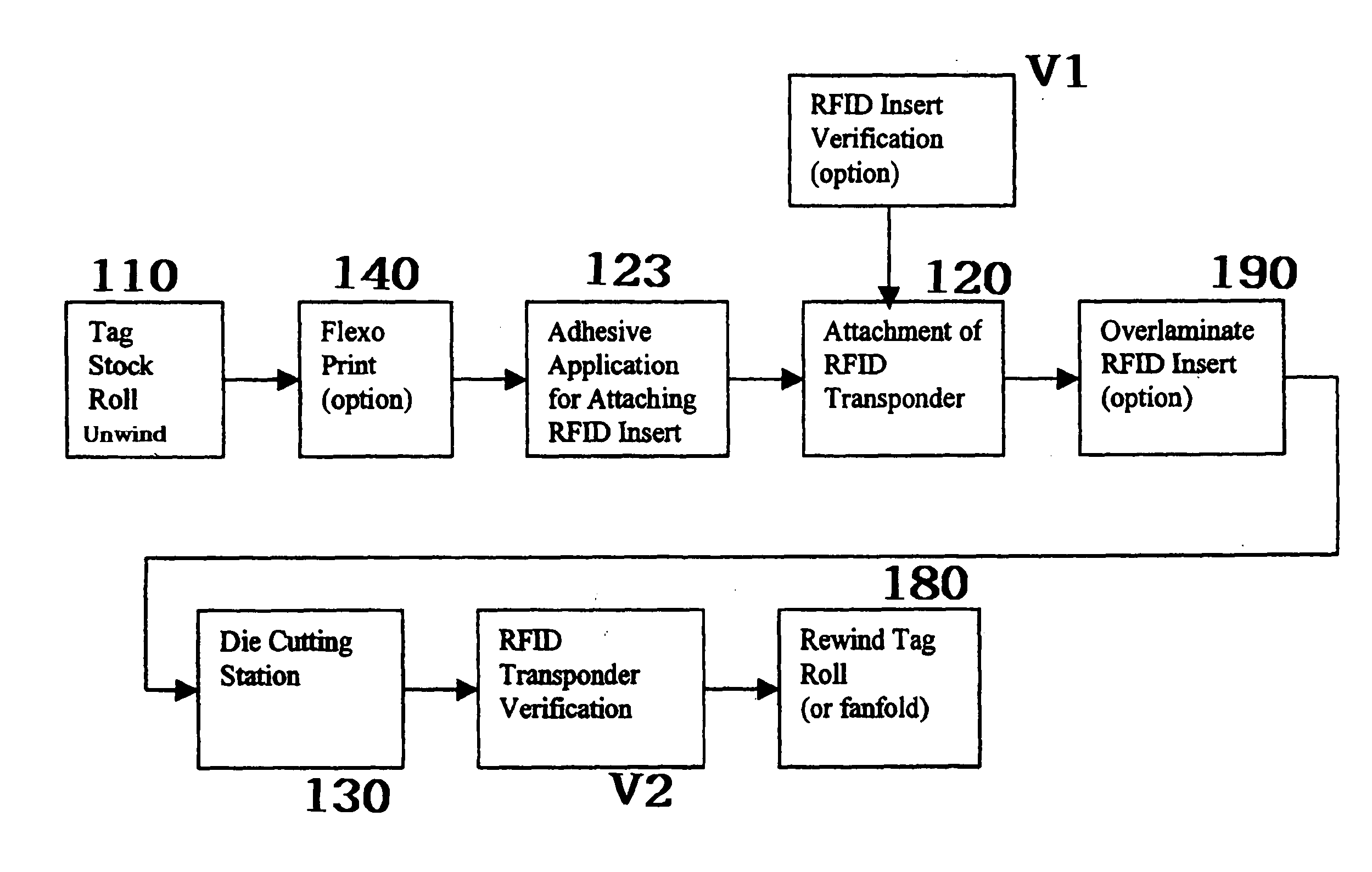Process for manufacturing RFID label
a technology of smart labels and manufacturing processes, applied in the direction of mechanical actuation of burglar alarms, instruments, paper/cardboard articles, etc., to achieve the effect of efficient, accurate and reliable processes
- Summary
- Abstract
- Description
- Claims
- Application Information
AI Technical Summary
Benefits of technology
Problems solved by technology
Method used
Image
Examples
Embodiment Construction
[0028] The present invention is an automated process for manufacturing smart labels or tags having an RFID transponder. The inventive method provides an efficient, accurate and reliable process for successfully manufacturing RFID labels or tags using one pass on a label converting press 100 equipped with an in-line insertion station 120.
[0029] A smart label 10 is shown in FIG. 1. Smart label 10 is a layered construction comprising a label face sheet 12, a release liner 16, an adhesive layer 14 between the label face sheet 12 and the liner 16 and an RFID transponder 18 between the label face sheet 12 with adhesive 14 and the liner 16. Optionally, there may be an adhesive layer 20 or adhesive patch on the back of the RFID transponder, multiple inserts 18, multiple label face sheets 12 and / or multiple liner 16 layers. Multiple label face sheets 12 and multiple liner sheets 16 are useful in piggyback or multi-layer forms.
[0030] An RFID transponder 18 (also referred to as an RFID tag, ...
PUM
 Login to View More
Login to View More Abstract
Description
Claims
Application Information
 Login to View More
Login to View More - R&D
- Intellectual Property
- Life Sciences
- Materials
- Tech Scout
- Unparalleled Data Quality
- Higher Quality Content
- 60% Fewer Hallucinations
Browse by: Latest US Patents, China's latest patents, Technical Efficacy Thesaurus, Application Domain, Technology Topic, Popular Technical Reports.
© 2025 PatSnap. All rights reserved.Legal|Privacy policy|Modern Slavery Act Transparency Statement|Sitemap|About US| Contact US: help@patsnap.com



